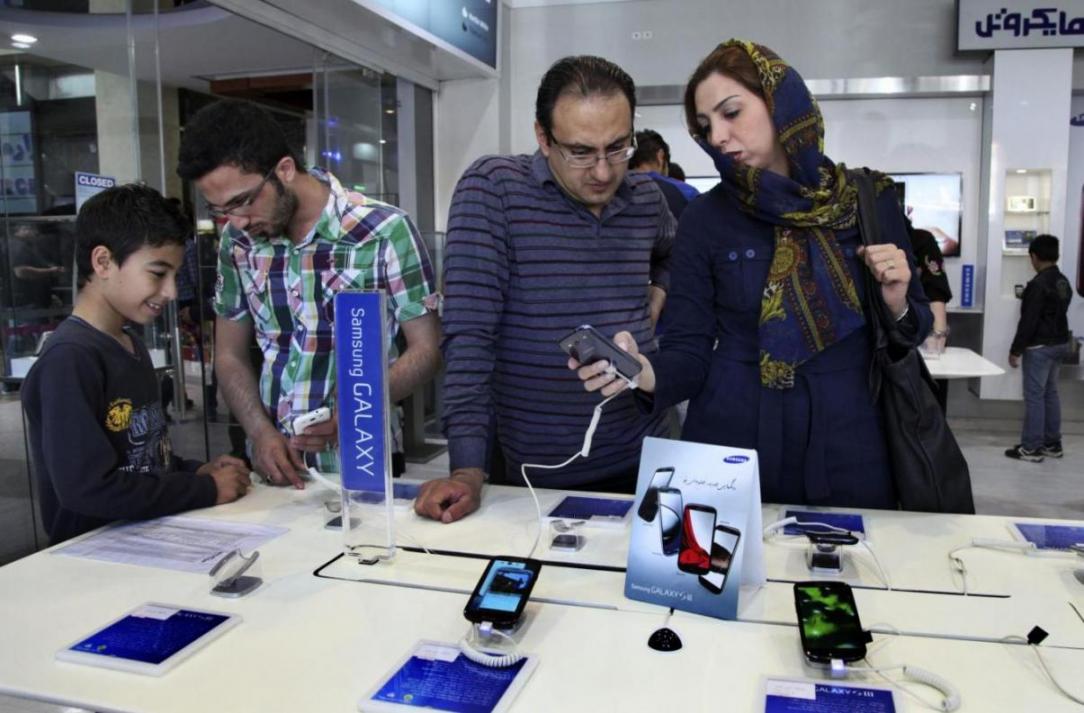As sanctions on Iran begin to fall away after the successful signing of the Joint Comprehensive Plan of Action in Vienna, Austria on July 14, a select group of industries have been considered prime investment targets, one of which is telecommunications, especially mobile telecom.
This field has one of the quickest turnarounds in terms of generating revenue as well as having a populace thirsty for the latest handheld device.
Iran currently ranks as one of the top Middle East countries for mobile phone ownership, with penetration believed to be at over 120%, according to local sources.
Add to this, two of the largest electronic manufacturers and one of Africa's largest mobile phone operators who chose to stay in the market even when international sanctions were at their toughest, and it shows that even then, money could be made from this population of just under 80 million.
Movements in this local telecoms industry, of late, have led to a rush of speculations about selloffs, buyouts and even foreign entrants negotiating deals post-sanctions with local partners in Iran.
Over the past year, 3G, 4G-LTE Internet services have been the proverbial nitrous oxide to the local Internet community, with more people now owning their second or even third smartphone, a majority of which are running on Android, according to MTN-Irancell and Digiato.
MTN-Irancell and to a lesser extent MCI, (Hamrahe Aval, the company's first mobile phone network) have been battling it out over the past 12 months to get the best staff to upgrade their aging networks. The former has led the march with its push for 4G connectivity. MCI has opted for pushing 3G, stating that "a majority of our customers do not have 4G-capable phones yet."
This decision may come to bite them in the next few years, as current technology will become incrementally cheaper with buyers leapfrogging 3G in favor of 4G phones.
Recent Events
The takeup of these technologies is backed up by reports from the companies themselves.
According to a report from Mehr News Agency on August 4, Alireza Qalambor Dezfouli, CEO of MTN-Irancell, said his company now has 7.5 million mobile broadband users, which account for more than one-third of the company's user base.
That figure was then "one-upped" by Irancell's main competitor MCI with their breakdown of customers. In their public announcement, the main Internet provider in Iran announced that they now had 73 million subscribers and offer 3G Internet and a much more limited 4G connection in 257 Iranian cities. The company did not say what their demographic breakdown was.
The more interesting notes to come out of the previous quarter's statistics come from the National Internet Development Management Center, which published statistics on Iranian Internet users.
According to their report, Tehran and Mazandaran have the highest Internet penetration rates in the country, with 107% and 96% respectively. However, multiple journalists have questioned the accuracy of the figures.
The report from that particular organization also broke previous figures on the number of Internet users and their respective categories. The figures mention that as of August 2015, 23,918,454 people in Iran are now connected to mobile Internet telephone services through the three biggest providers.
Next up was ADSL with 15,574,980. Dial-Up, WiMax and Fiber Optic make up the rest of users. This figure had come under close scrutiny from sections of the business community, which claimed that that this figure would put Internet usage at 15% more than the previous statistics.
In a separate interview, Iran's Telecoms Minister Mahmoud Vaezi said ADSL users during the course of the President Hassan Rouhani administration had increased from 3.2 million to 20 million people.
Dezfouli added that his company had coverage of over 400 cities with 3G covering 80 of them under 4G connectivity. He also mentioned that monthly data usage through his company has increased 450% since July 2014.
At the end of August, Vahid Sadouqi, CEO of MCI, announced that the company's annual budget sits at 2,700 billion Iranian rials ($90 million), noting that his company now reinvests 27% of their net-profits back into the company.
Virtual Operators Adding to the Mix
The most radical announcement, which will ultimately shake up the industry, is that at least a dozen new mobile phone players would enter the market via the Mobile Virtual Network Operator model. This would ultimately give the freedom of choice denied until recently to Iran's consumers.
Speaking at the Mobile Virtual Network Operators Conference in mid-September, Ali Asghar Amidian said MVNOs will contribute to the growth of mobile phone industry and are an important growth segment in the industry.
"By allowing MVNOs into the mix, we can create a competitive ground in which service quality can increase and reasonable tariffs can be offered," he said.
Amidian predicted that in the next 10 years, MVNOs will have 13 million subscribers and hold 15% share of the mobile phone market by the end of 2025.
A total of 52 applicants have registered for an MVNO license, including 32 foreign operators, 13 investment companies and seven banks.
Among those applying for the MVNO licenses include traditional ADSL Internet supplier Shatel.
Shatel President Hassan Shanesaz-Zadeh said, "I believe with the growth of digital communications, our company, with its experience in this industry, is leading the charge in pushing consumers to VOIP and HD audio calls."


